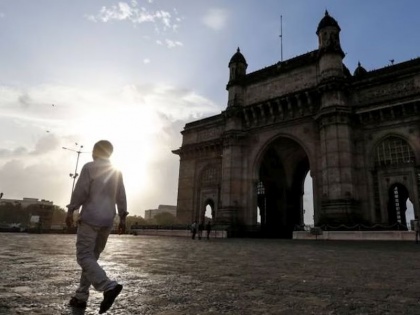Mumbai Temperature Rising: Is Holi Becoming Warmer Than Before?
By Snehal Mutha | Updated: March 23, 2024 14:54 IST2024-03-23T14:53:33+5:302024-03-23T14:54:21+5:30
The scorching temperatures in Mumbai have left residents feeling the heat, with the mercury soaring above 38.8 degrees Celsius ...

Mumbai Temperature Rising: Is Holi Becoming Warmer Than Before?
The scorching temperatures in Mumbai have left residents feeling the heat, with the mercury soaring above 38.8 degrees Celsius consistently for the past three days. The 21st of March marked the pinnacle of this season's heat, with the Santacruz Observatory recording a high of 38.8 degrees Celsius, accompanied by an unusually warm night temperature of 24 degrees Celsius. Although there was a slight dip to 35.5 degrees Celsius on Friday, temperatures remained notably above average. There are growing concerns that not only Mumbai but also at least 37 other cities across the state could experience temperatures soaring to 40 degrees Celsius during the upcoming Holi festival.
A study analyzing the temperature data since 1970 suggests scorching temperatures exceeding 40 degrees Celsius around Holi in late March. The study, conducted by Climate Central, an independent group of scientists based in the U.S., found that western and northern India have experienced the most significant warming compared to 1970 levels.
The analysis reveals that the risk of reaching 40 degrees Celsius now encompasses nine states. Earlier it was only three- Maharashtra, Chhattisgarh and Bihar. But now to expand to Rajasthan, Gujarat, Telangana, Madhya Pradesh, Odisha, and Andhra Pradesh. Maharashtra has the highest probability at 14 percent.
Researchers identified 37 cities in these states with at least a 1 percent chance of experiencing temperatures of 40 degrees Celsius or higher. Eleven cities face a 10 percent or greater probability. Bilaspur in Chhattisgarh has the highest risk at 31 percent, with a 2.5 times greater chance of reaching 40 degrees Celsius compared to the 1970s. Indore in Madhya Pradesh shows the most significant increase in risk, with an 8 percent probability, reflecting an 8.1-fold increase from the past. Madurai and Bhopal also face substantial risk increases (7.1 and 5.5 times higher, respectively) and relatively high overall risk (19 percent and 12 percent). People around India, including Mumbai, have to bear the brunt of the growing temperature and warm summer. Probably, people may feel it more while celebrating Holi, as it is an outdoor festival.
The analysis highlights the abrupt shift from cool winter temperatures to much warmer conditions. Following the strong warming observed in February, March is expected to follow a similar pattern. These trends are a clear sign of human-induced climate change, affecting Mumbai too.
Weather experts pointed out that rising global temperatures are the primary driver behind the soaring mercury levels. Heatwaves in March were once rare, but with increasing global warming, the probability of these events has risen significantly. The unprecedented release of heat-trapping greenhouse gases since the Industrial Revolution has led to a global temperature spike.
The World Meteorological Organization's "State of the Global Climate 2023" report confirms record highs in greenhouse gas levels, surface temperatures, ocean heat and acidification, and sea level rise in 2023. The burning of fossil fuels since the Industrial Revolution is a significant contributor to these elevated greenhouse gas concentrations.
Open in app